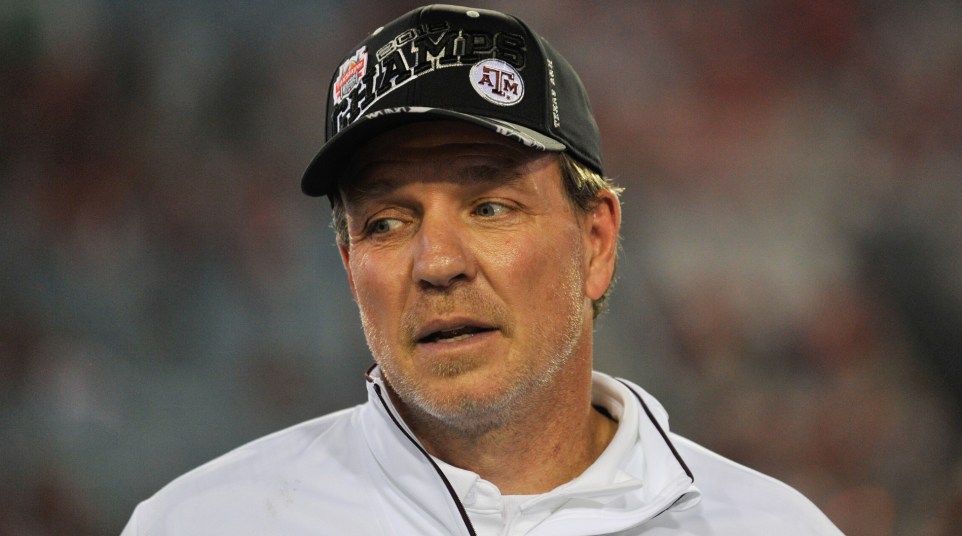
Better or worse? Previewing Texas A&M's offense in 2019
Editor’s note: After completing the SEC East, this is the final in a series previewing every SEC West team’s offense.
It’s going to be difficult to top what the Texas A&M offense accomplished last season. The Aggies were 4th among SEC teams in scoring (36 points per game) and fourth in total offense (471.6 yards per game). Only Georgia and Mississippi State averaged more yards rushing per game.
To complicate matters, Trayveon Williams left early for the NFL Draft after piling up 3,615 rushing yards over 3 seasons, including a conference-best 1,760 in 2018.
Thankfully, Kellen Mond returns for a third season at quarterback. He also has the team’s most rushing yards among returning players.
So there’s a lot to live up to in 2019. Can the Aggies’ offense produce at the rate it did a season ago? Here’s a closer look at how the offense and how it compares to last season’s.
Passing offense: Worse
As mentioned above, Mond will be stepping into his 3rd season at Texas A&M. Only Alabama’s Tua Tagovailoa and South Carolina’s Jake Bentley return with a better per-game passing yard average than Mond’s (239.0).
And while the running game establishes itself, Mond will be tasked with moving the offense up and down the field as he did last season. But that might not be as easy as it was a year ago. The offensive line has done some shuffling and leading target Jace Sternberger left early for the NFL.
However, a solid group of receivers returns. Quartney Davis caught 45 passes a year ago, for 585 yards and 7 touchdowns. Camron Buckley (34-474, 1 TD), Jhamon Ausbon (31-375) and Kendrick Rogers (27-336, 5 TDs) are capable playmakers but must step up their respective games.
Still, the biggest question mark remains at tight end where sophomore Glen Beal and incoming freshman Baylor Cupp appear to be the frontrunners to replace Sternberger.
The passing game is somewhat teetering on the edge anyway, given that after the transfer of Nick Starkel to Arkansas, the Aggies don’t have a backup who has thrown more than 1 pass in college. Connor Blumrick could fill the shoes. We just don’t have enough data to make that call. His lone pass last season came in the 2018 opener, an 8-yard completion against Northwestern State.
By all indications, incoming freshman Zach Calzada could be the future QB at Texas A&M. But he probably wouldn’t be ready if needed to run as efficient an offense this season.
Rushing offense: Worse
Replacing the SEC’s leading rusher is obviously no small task. Jashaun Corbin ran for 341 yards on 61 carries last season. That’s the most of any returning running back on the team. Sophomore Jacob Kibodi is the only returning running back to carry the ball last season who wasn’t a freshman. And he had just 3 carries for 26 yards.
That’s not to say that one of the many young talents won’t emerge behind Mond’s passing attack. Kibodi led all rushers in the Maroon & White Game with 106 yards on 20 carries. That’s in addition to 53 receiving yards on 5 receptions.
Big backs Cordarrian Richardson (240 pounds) and Vernon Jackson (230) could develop into lethal weapons in Fisher’s physical style. And don’t forget Deneric Prince, who rushed for 52 yards on 12 carries as well as catching 5 passes for 38 yards in the Maroon & White Game.
So while things look a bit grim for the running game at this point, there is a plethora of talent and time to develop if Mond and the passing game can take the pressure off.
Special teams: Better
Freshman Seth Small struggled last season. Thrust into duty when senior Daniel LaCamera went down with an injury, Small made 20-of-28 field goal attempts and the Aggies ranked 11th in the SEC in field goal percentage (69.7). Small hit all 40 extra point attempts and with a year of experience, should make strides in the upcoming season.
There’s not a lot of room for improvement in the kick return department, however. Corbin led the SEC and was third in the nation, averaging 30.14 yards per return. In 14 tries, Corbin returned 1 for a touchdown.
Overall: Worse
I said it would be difficult to reproduce what the offense did in 2018. It will be a tall task, but the potential is there. Regardless of whether it reaches the level of last year’s production, Texas A&M should again have one of the better offenses in the SEC. How good will depend upon a number of new faces stepping up and taking their respective games to the next level.
If Fisher can accelerate that maturity process — and if anyone can do it, he can — this group could meet and perhaps surpass the outstanding success of the 2018 Texas A&M offense.
PREVIOUSLY IN BETTER/WORSE OFFENSE
Florida | Georgia| Kentucky | Missouri | South Carolina | Tennessee | Vanderbilt
Alabama | Arkansas | Auburn | LSU | Mississippi State | Ole Miss
